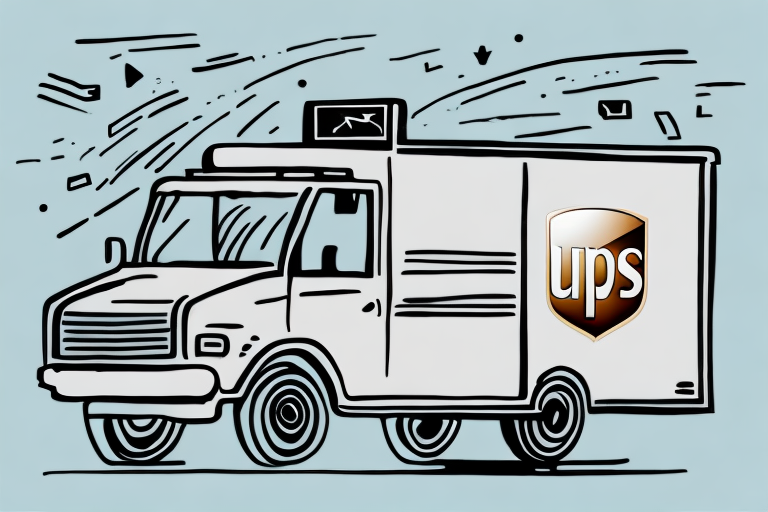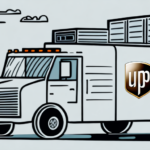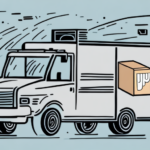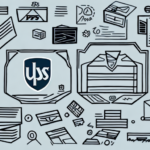Understanding Why UPS Doesn't Receive Your Package
Experiencing issues with your UPS shipments not reaching their destination can be frustrating. There are several reasons why UPS might not receive your package, ranging from simple errors to unexpected disruptions. Identifying the root cause is crucial for resolving the issue efficiently.
- Incorrect Address: An incomplete, incorrect, or illegible shipping address can prevent UPS from locating or delivering your package.
- Missed Pickup: If the package isn't ready for pickup at the scheduled time, UPS may not collect it.
- Severe Weather Conditions: Adverse weather like hurricanes, snowstorms, or floods can delay or halt package deliveries.
- Package Mishandling: Although rare, packages can be lost due to mishandling, theft, or logistical errors.
- Prohibited Items: UPS has strict guidelines on what can be shipped. Items like hazardous materials, firearms, and illegal substances are not permitted and will be rejected.
Understanding these factors can help you take preventive measures and respond appropriately if your package doesn't arrive as expected.
Checking and Tracking Your UPS Shipment
Monitoring your package's status is the first step in ensuring its safe delivery. UPS provides several tools to help you track your shipment:
- UPS Tracking Number: Use the tracking number provided at the time of shipment to monitor your package on the UPS Tracking Page.
- UPS Mobile App: Download the UPS app to receive real-time tracking updates and notifications.
- UPS My Choice: Enroll in UPS My Choice for personalized alerts and the ability to manage deliveries.
Regularly checking your shipment status can help you identify delays early and take necessary actions.
Steps to Take When Your Package Is Lost or Stuck in Transit
If your UPS package appears lost or isn't progressing through the delivery process, follow these steps:
- Verify Tracking Information: Ensure the tracking number is correct and review the latest status updates.
- Contact UPS Customer Service: Reach out to UPS for detailed information and assistance. You can contact them through their Customer Support Center.
- Check with Neighbors and Local Facilities: Sometimes packages are delivered to nearby addresses or held at local UPS facilities.
- File a Claim: If the package is confirmed lost or damaged, initiate a claim with UPS to seek reimbursement.
Prompt action increases the likelihood of locating your package or receiving compensation.
Filing a Claim for a Lost or Damaged Package
When your UPS package is lost or arrives damaged, filing a claim is essential to recover the loss. Here's how to proceed:
Required Information
- Tracking Number: Essential for identifying and locating your shipment.
- Package Description: Detailed information about the contents and value of the package.
- Proof of Value: Receipts or invoices that confirm the value of the items shipped.
- Photographic Evidence: Images of the damaged package and its contents, if applicable.
Filing Process
You can file a claim through the following methods:
- Online: Visit the UPS claims page and follow the instructions.
- By Phone: Call UPS Customer Service for assistance with your claim.
- In Person: Visit a local UPS store or customer center.
Ensure you submit your claim within UPS's specified time limits—typically within 60 days for lost packages and within 7 days for damaged items.
For more detailed instructions, refer to the UPS Claims Guide.
Preventing Future Shipping Issues with UPS
To minimize the chances of encountering shipping problems with UPS, consider the following best practices:
Accurate Information
- Double-Check Addresses: Ensure that both the sender's and recipient's addresses are correct and complete.
- Verify Tracking Numbers: Confirm that the tracking number is accurate before initiating the shipment.
Proper Packaging
- Use Sturdy Materials: Choose durable boxes and appropriate packaging materials to protect your items.
- Label Clearly: Clearly mark fragile items and provide detailed shipping instructions if necessary.
Choose the Right Services
- Select Appropriate Shipping Options: Based on package size, weight, and delivery timeline.
- Utilize Additional Services: Consider options like signature confirmation or shipping insurance for high-value items.
Implementing these strategies can significantly reduce the risk of shipping errors and ensure a smoother delivery process.
Alternative Shipping Options to Consider Besides UPS
If UPS doesn't meet your shipping needs or you're experiencing recurrent issues, several alternative carriers offer reliable services:
- FedEx: Known for its fast and reliable international shipping services.
- USPS: Offers cost-effective domestic shipping options, especially for smaller packages.
- DHL: Excels in global shipping with extensive international networks.
- Amazon Shipping: Ideal for frequent Amazon sellers looking to streamline their shipping processes.
Each carrier has its strengths, so evaluate based on your specific shipping requirements, budget, and destination to choose the best fit.
Common Mistakes to Avoid When Shipping with UPS and Other Carriers
Avoiding common shipping errors can save time, money, and prevent packages from getting lost or damaged. Here are some pitfalls to watch out for:
- Poor Packaging: Using inadequate materials can lead to package damage during transit.
- Incorrect Weight or Dimensions: Misestimating these can result in unexpected shipping costs or delivery delays.
- Missed Deadlines: Not adhering to pickup or delivery schedules can disrupt the entire shipping process.
- Wrong Labels or Addresses: Inaccurate labeling can cause packages to be misrouted or lost.
By being mindful of these common mistakes and adhering to best practices, you can enhance your shipping experience and ensure your packages arrive safely and on time.
Conclusion
While UPS is a trusted and reliable shipping carrier, issues can occasionally arise that prevent your package from reaching its destination. By understanding the potential causes, actively tracking your shipments, and taking proactive steps to address any problems, you can mitigate the impact of lost or delayed packages. Additionally, implementing preventive measures and being aware of alternative shipping options can further enhance your shipping reliability. Whether you're shipping for personal or business purposes, these strategies will help ensure a smooth and efficient delivery experience.




















